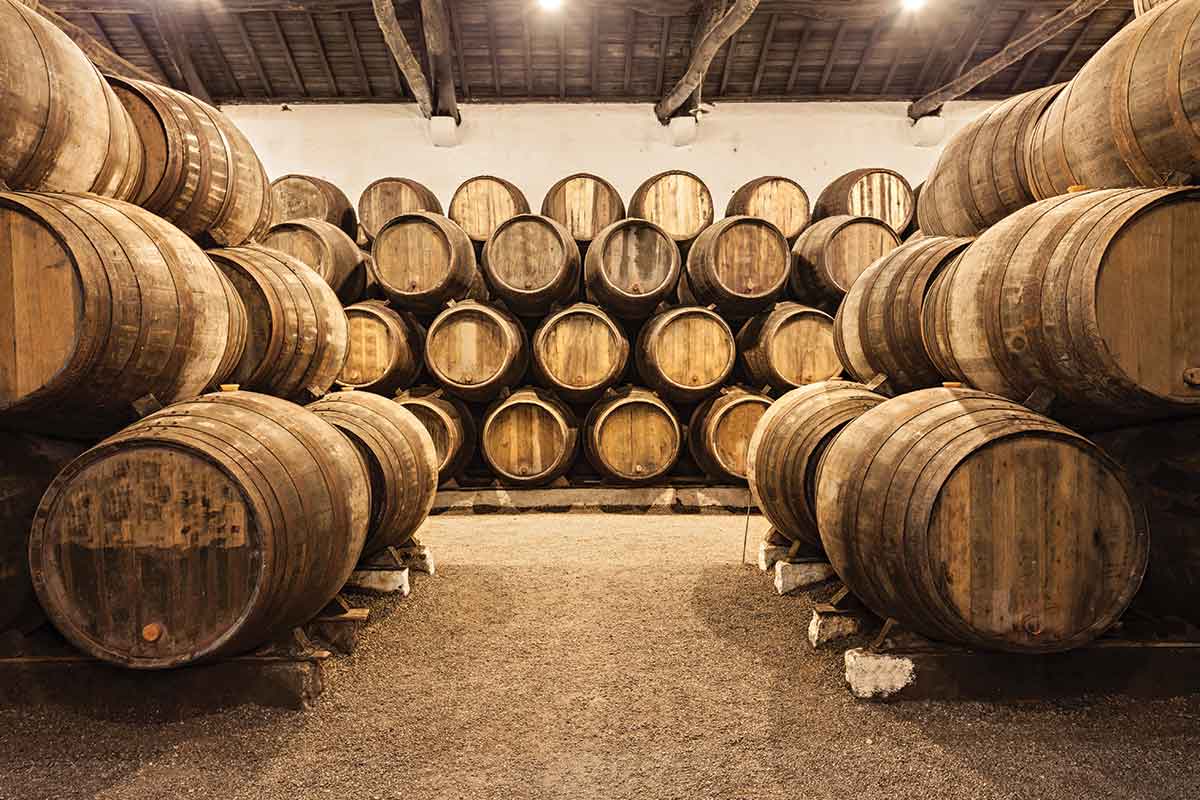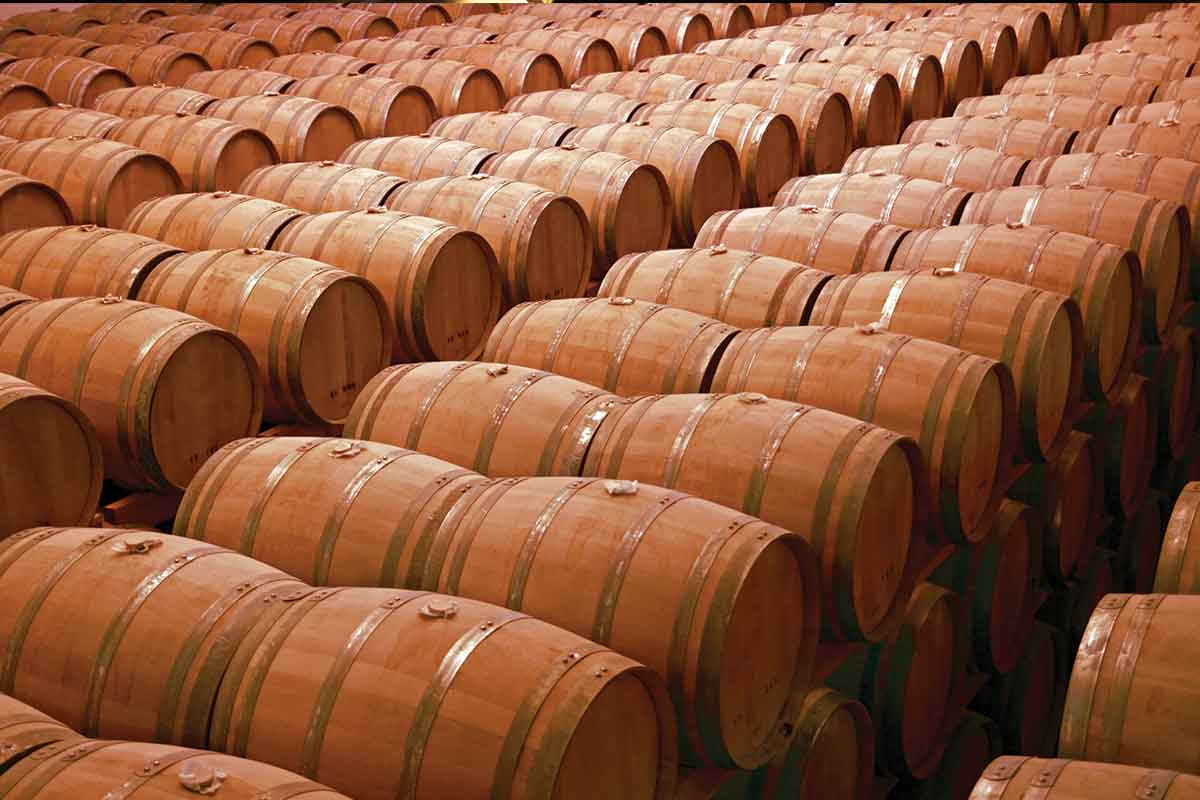If you’ve ever heard the term solera chances are it was in reference to fortified wine, not whiskey. Solera aging, has been commonly used by sherry, port and Madeira producers since the mid-18th century. The practice has also been adopted by some cognac producers. In recent years, a handful of whiskey makers around the world have adopted their own versions of this time-tested process.
Traditional Solera Aging
So what is solera aging, exactly? In its most traditional form, a solera is a fractional aging and blending method. Using a tiered system of barrels (the tiers are called criaderas) young wine is blended into older wine to allow them to mingle and age together. New product is first added into the top criadera. Over time, it’s transferred through the top and middle layers of the solera system until it reaches the lowest criadera. Once the barrel reaches this bottom tier, its contents are ready for bottling and removed.

Solera Vats for Blending
A solera in spirits can also refer to a solera vat, rather than the more arduous traditional solera system. In this set-up, whiskey is aged traditionally and then placed into a large wooden vessel to finish its maturation. Once in the vat, it’s blended with older product that’s kept inside. After the spirits marry, it’s ready to be bottled. Both systems have their advantages, and both are credited with encouraging a consistent product that exhibits rich, complex characteristics.
Want to try it for yourself? Here are five whiskeys from around the world that are made using traditional solera aging or vatted solera blending.
Hillrock Solera Aged Bourbon
A whiskey pioneered by the late master distiller Dave Pickerell, Hillrock’s Solera Aged Bourbon uses a traditional solera aging system to fully blend its older, outsourced whiskey from MGP with younger spirits distilled at Hillrock’s own distillery. Prior to bottling the whiskey is then finished in 20-year-old oloroso sherry casks. This imparts a touch of flavor from a product more commonly associated with the centuries old solera process.
Blade & Bow Bourbon
Blade & Bow began using a solera system to fractionally blend and age this whiskey—one of its two standard bottlings—in an “homage” to the now-defunct Stitzel-Weller distillery that shut down operations nearly three decades ago. The whiskey brand claims its solera system helps preserve some of the older stocks of whiskey from the distillery prior to its closing in 1992. Though it doesn’t include an age statement, some of the whiskeys in the finished blend have quite a bit of age one them.
Starward Solera Single Malt
Using a traditional solera aging system, Australian distillery Starward’s criaderas comprise former Apera casks—that is, barrels that were previously used to age the country’s own style of fortified wine, which is akin to sherry. The whisky that’s regularly introduced into the solera is a twice-distilled single malt barley spirit. As its website notes, the fractional blending method of solera “means there’s a drop of our original cask in every bottle”.

Stranahan’s Diamond Peak
First released in 2015, this relatively new single malt offering from Stranahan’s spends most of its time aging traditionally. Charred #3 American oak is used for maturation in the Colorado barrel warehouses for four years. A couple of years after its first release, the distillery updated the Diamond Peak process to include solera finishing. The updated version places the aged single malt into 620-gallon foeders (very large wooden casks) for further maturation. After marrying, whiskey is drawn out and cut with water sourced from the nearby Rocky Mountains for bottling.
Glenfiddich Our Solera Fifteen
It’s rare that a solera whisky has an age statement—especially one as high as this 15-year-old Speyside whisky from Glenfiddich. That’s because it spends that amount of time in traditional barrel warehouses, maturing in ex-sherry and new American oak casks.
Once it reaches the decade-and-a-half mark, the whisky is then transferred to what the distillery calls a solera tun. This large vat is where newly added aged whisky is allowed to mix with older reserves and mellow. Glenfiddich’s solera vat is always kept half full and it has not been fully emptied since 1998.
Ready to try some whiskey made with solera aging?
With Distiller, you’ll always know what’s in the bottle before you spend a cent. Rate, Review, and Discover spirits. Head on over to Distiller, or download the app for iOS and Android today!
Want to enjoy Distiller ad-free? Join Distiller Pro today to support the Distiller platform and keep ads off of your screen.



